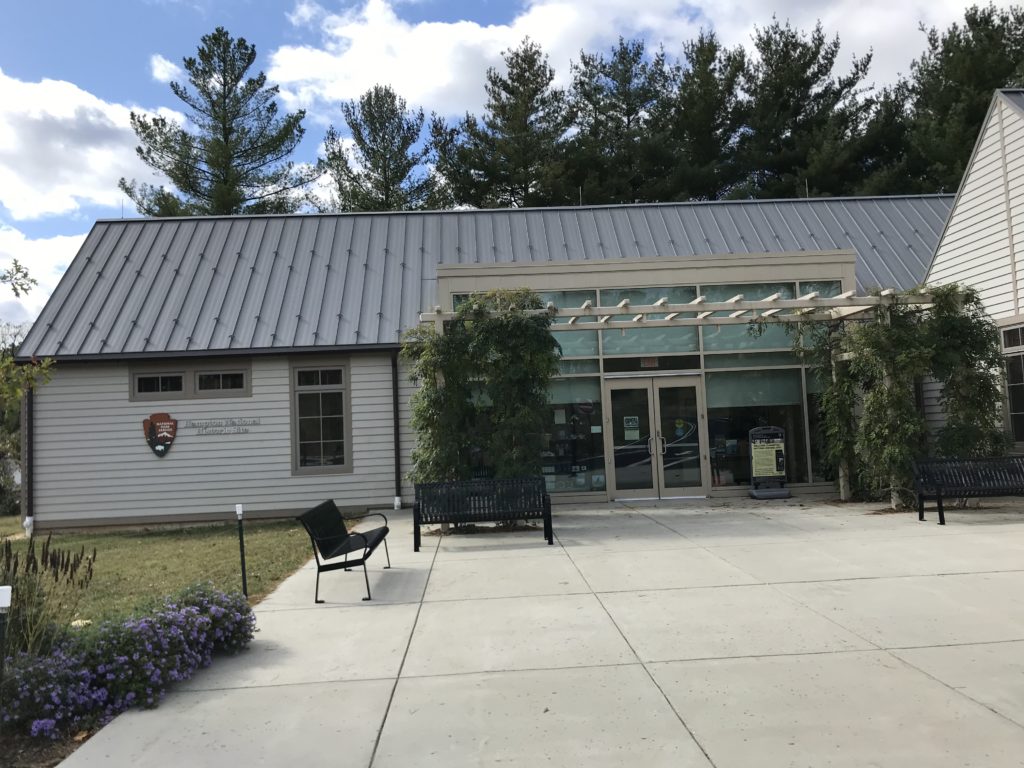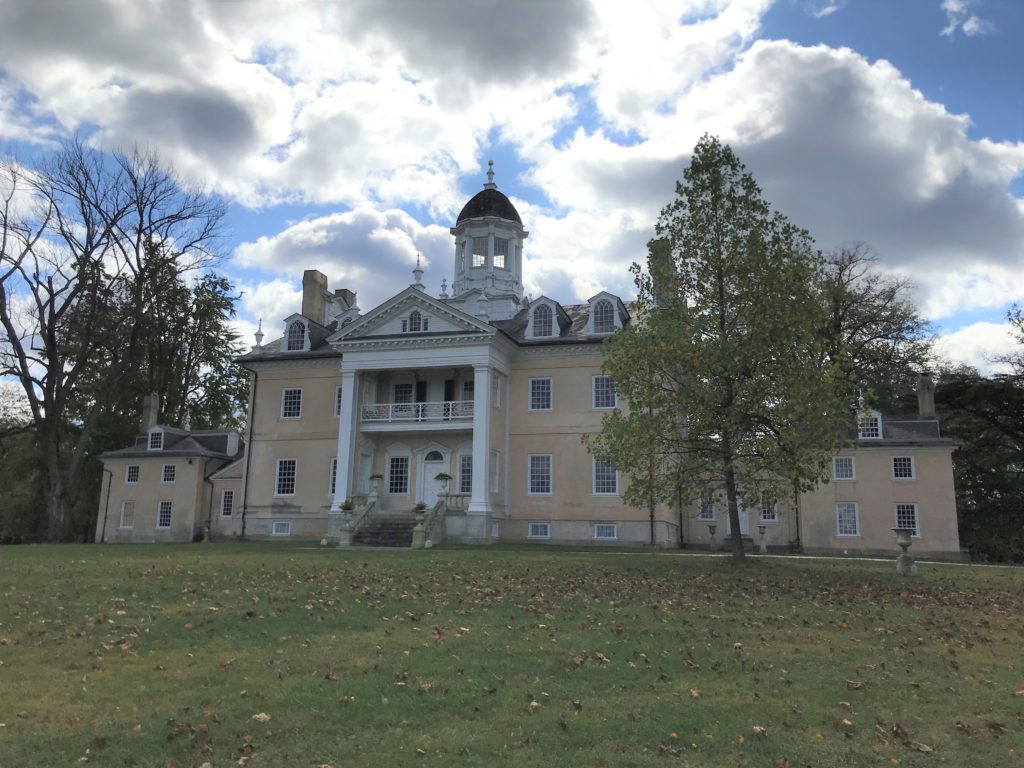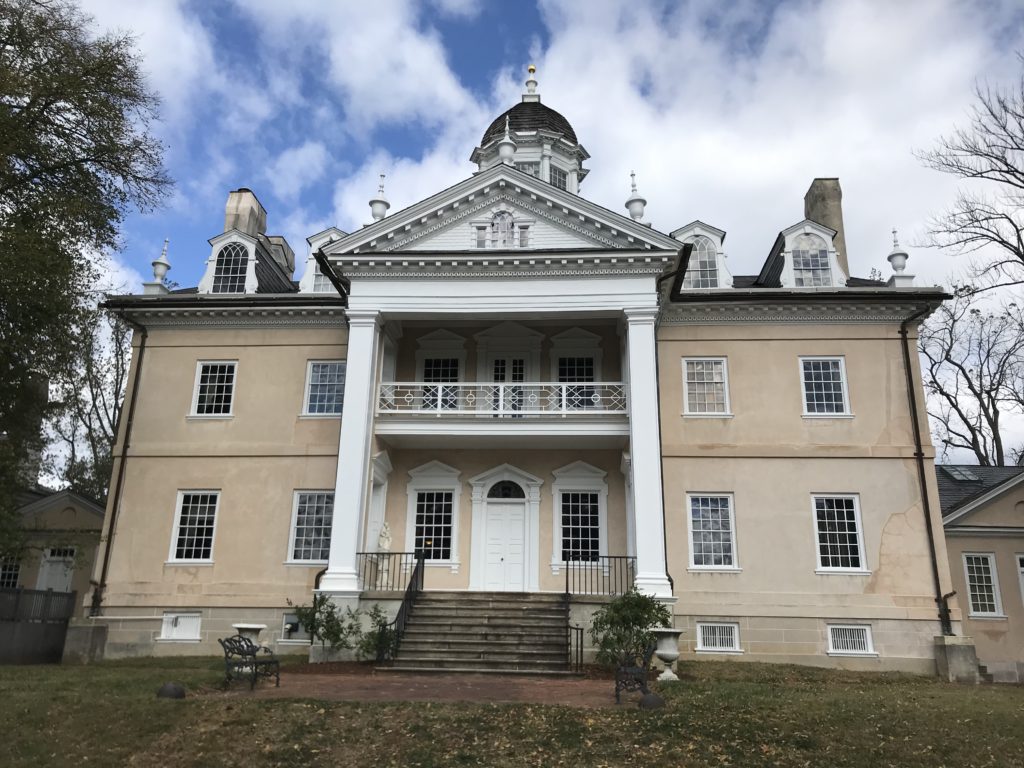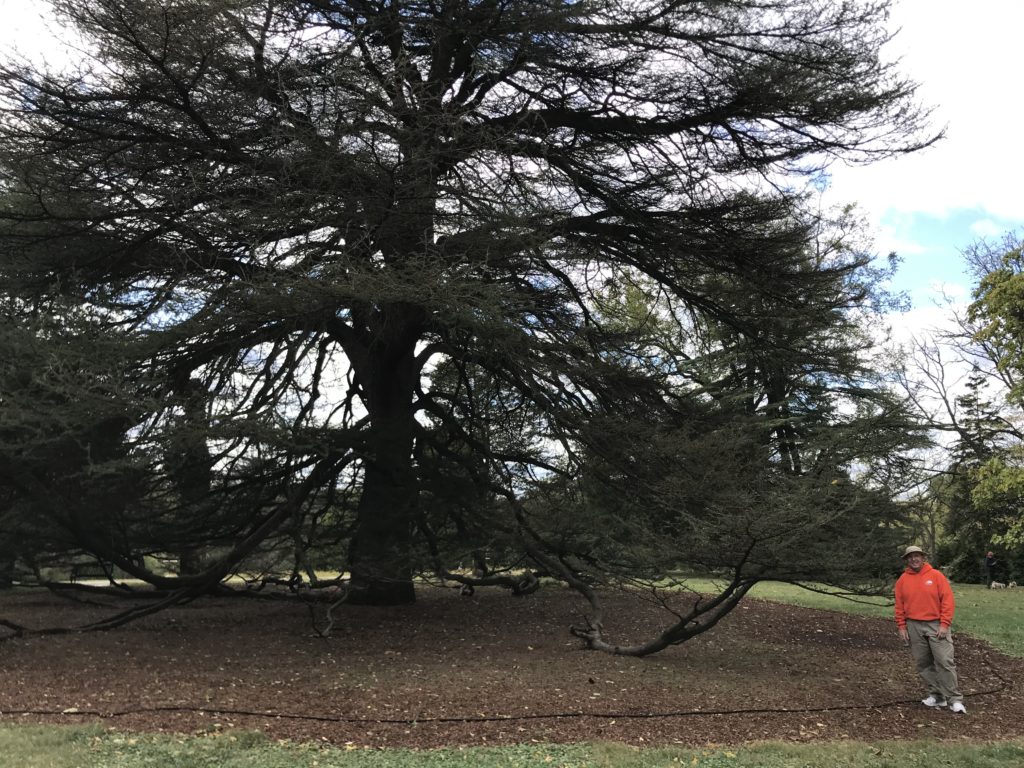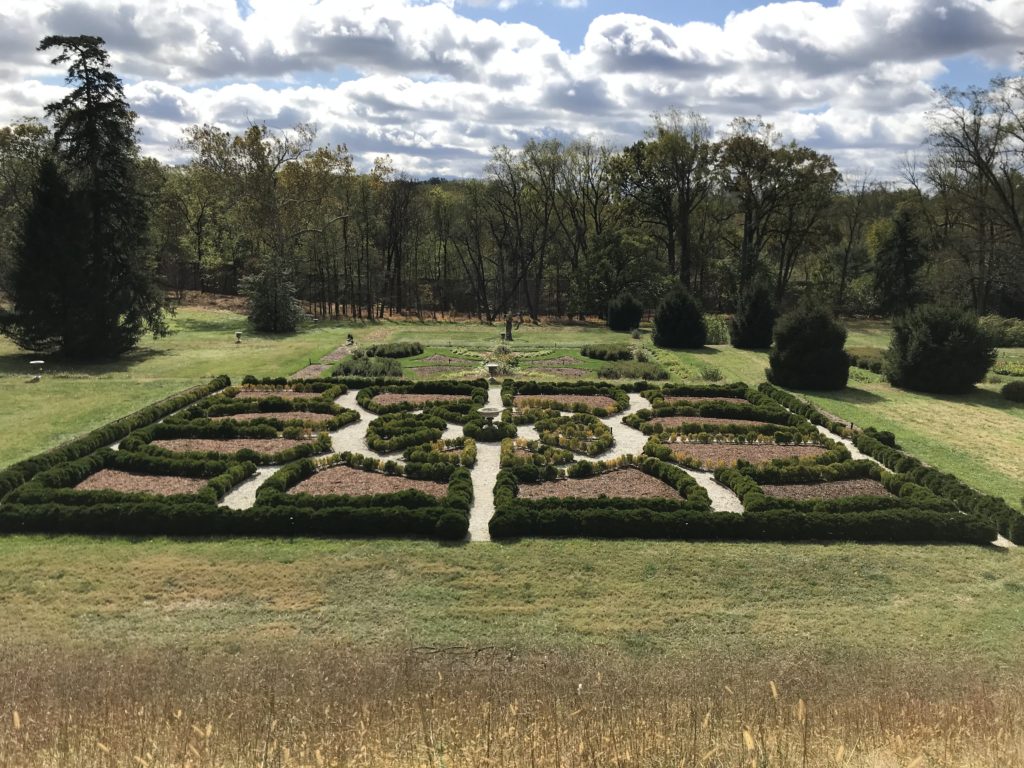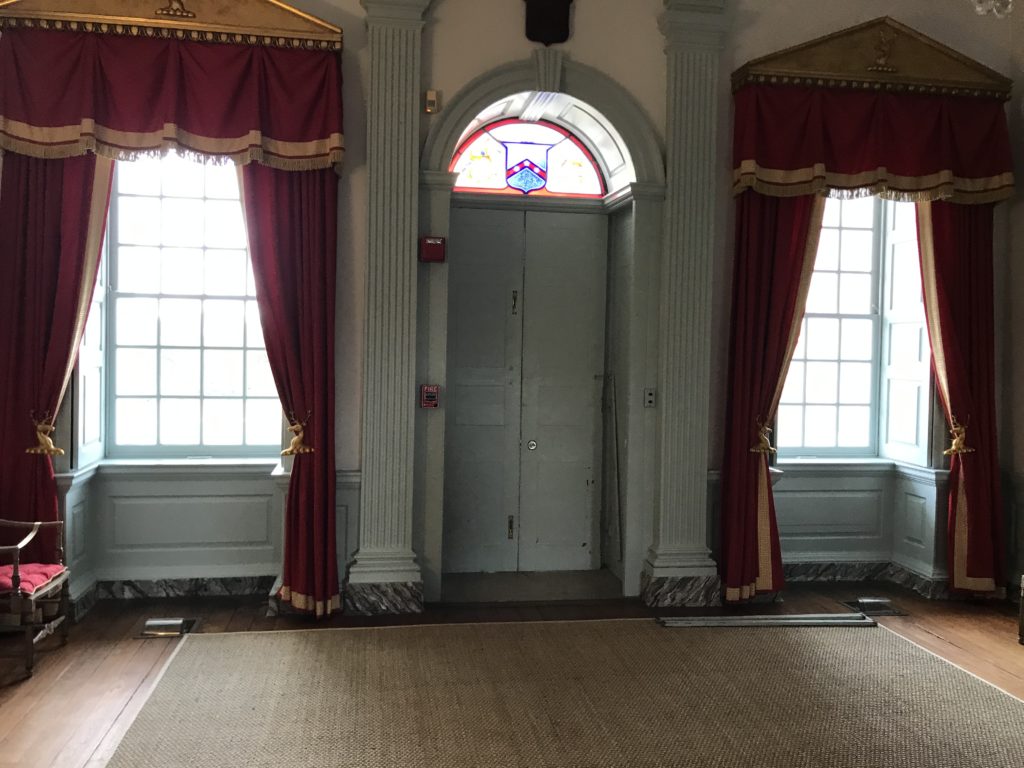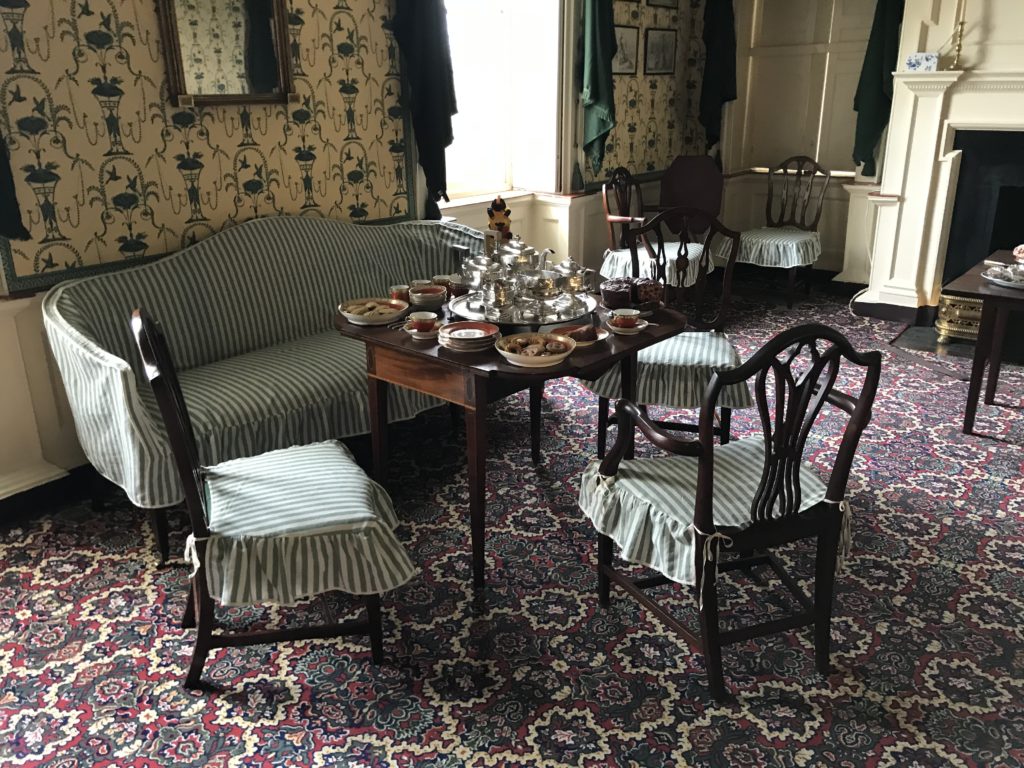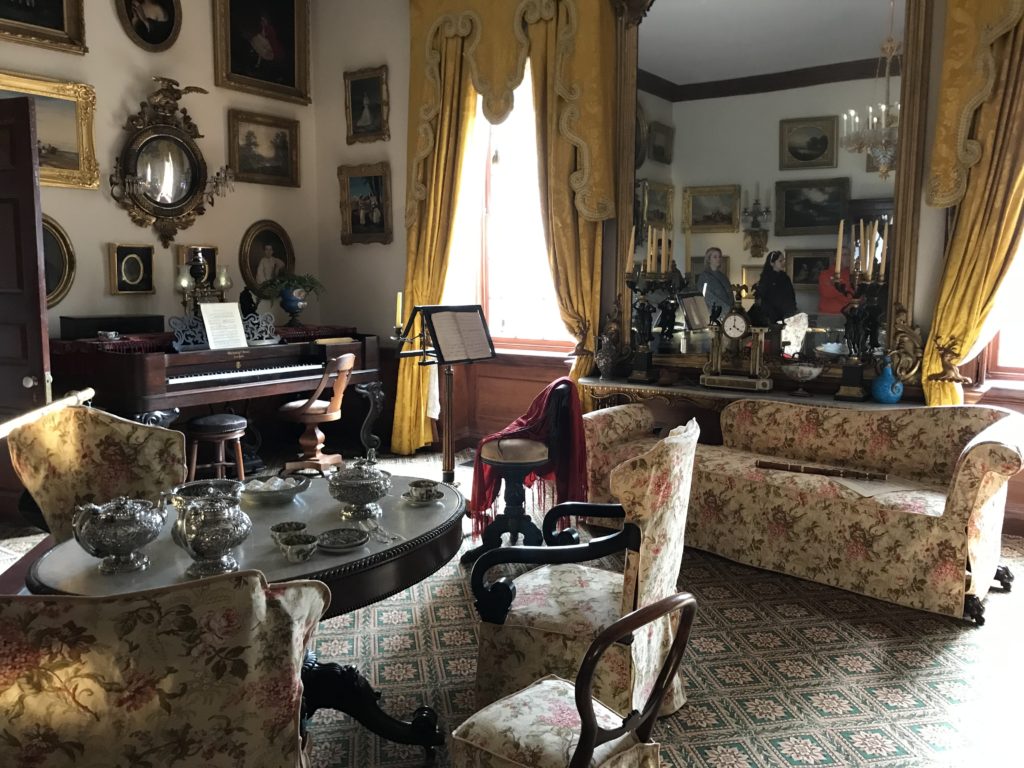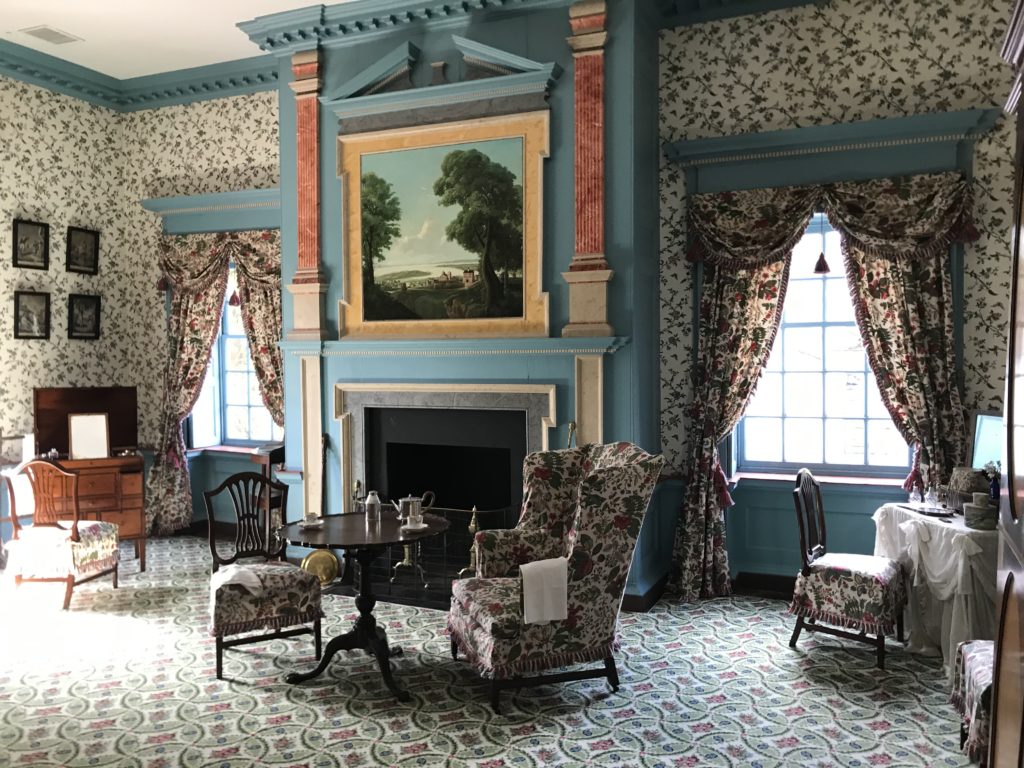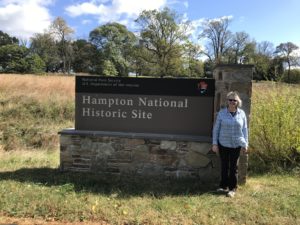 After visiting Fort McHenry, Tom and I headed to Hampton National Historic Site, on the northwest side of Baltimore. Neither of us had ever heard of Hampton National Historic Site before looking at our list of places to see in Baltimore. We weren’t really very interested in it. But I am compulsive about getting all the stamps for all the national park sites so we had to go.
After visiting Fort McHenry, Tom and I headed to Hampton National Historic Site, on the northwest side of Baltimore. Neither of us had ever heard of Hampton National Historic Site before looking at our list of places to see in Baltimore. We weren’t really very interested in it. But I am compulsive about getting all the stamps for all the national park sites so we had to go.
So, what is the Hampton National Historic Site? It is a beautiful and well-preserved Georgian mansion built in 1783 by Charles Ridgely Jr. Charles Ridgely Sr. owned 11,000 acres of land which he passed on to Charles. Charles expanded his holdings to 24,000 acres. He also established ironworks on the a tributary of the Gunpowder River. During the Revolutionary War, Ridgely Ironworks supplied arms to the patriot cause. The Ridgelys’ built Hampton Mansion as a summer home outside Baltimore.
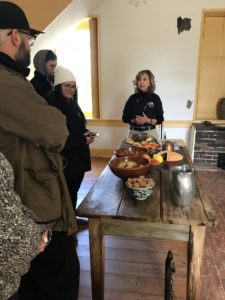
In 1790, Charles Ridgely Jr’s nephew, Charles Carnan Ridgely, inherited the house and property. Along with the ironworks, Ridgley owned 25,000 acres of farmland, cattle, thoroughbred horses, coal mines, marble quarries, and mills. In 1815 Charles Carnan Ridgely is elected governor of Maryland. When Charles died in 1828, his will freed most of his 300 slaves. His son, John inherited the house and property.
The Civil War began the economic hardships that led to the Hampton Estate’s decline. The way iron was made changed and the ironworks was no longer profitable. There were no slaves to work the fields, tend the animals or work in the mines and quarries. John’s son, Charles, inherited the property in 1867. When Charles died in 1872, the house and the remaining 1,000 acres of the estate went to son John Ridgely. His son, John Ridgely Jr, inherited the estate in 1938.
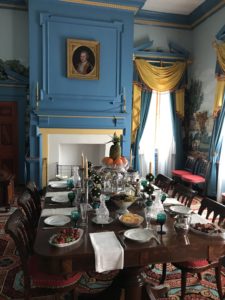
John realized that the family could no longer afford to live in the house or maintain it. Unwilling to see it decline, he had the mansion declared a national historic site. John and his wife moved to the farmhouse and gave the mansion and 45 acres to an organization that maintained it and gave tours. In 1979 the National Park Service took over administration of the mansion and 60 acres.
Today you can tour the Hampton mansion, with its original furniture, and see portraits of each of the six Ridgely men who lived in the mansion. National Park Service volunteers do tours of the mansion on the hour from 10 until 3, Thursdays through Sundays. The grounds are open every day, but the buildings, including the Visitors Center, are only open Thursdays through Sundays.
Tom and I toured the house and walked around the grounds, impressed with the family who maintained this beautiful home. The Ridgely name is not a household word like other early settlers, but they were important in the growth of our country. We enjoyed our visit to Hampton National Historic Site more than we thought we would.

